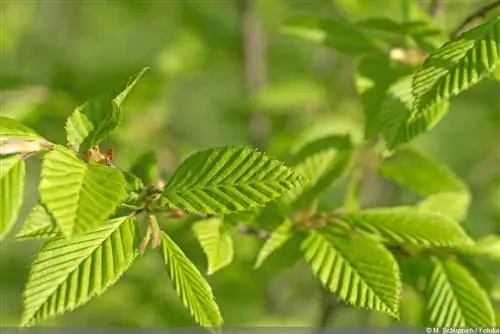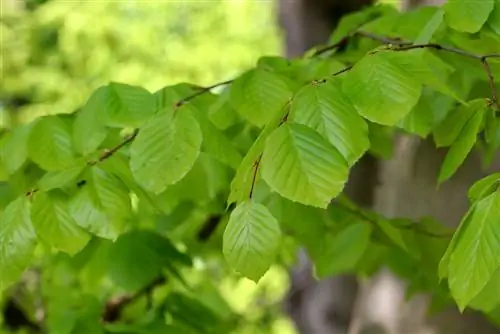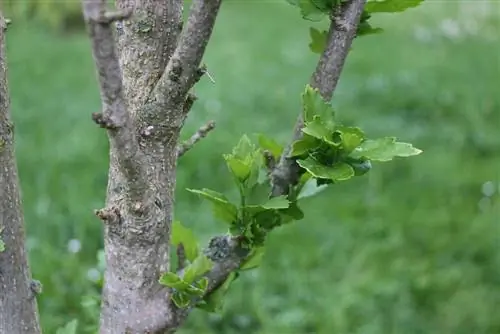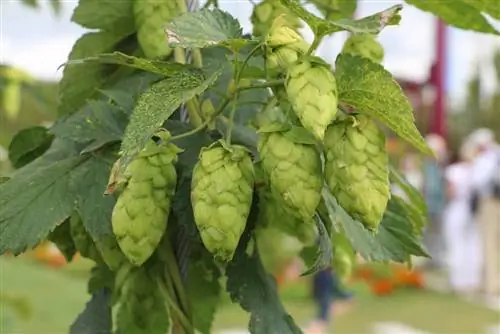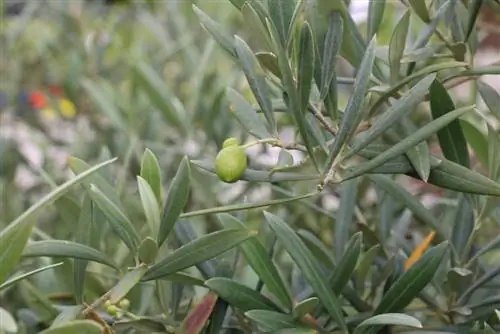- Author admin [email protected].
- Public 2023-12-17 03:39.
- Last modified 2025-06-01 06:48.
March 21st is internationally celebrated “Forest Day”, on which different nations determine their “Tree of the Year”. These are often regionally widespread species, but sometimes they are rare or unknown species. The European hopbeam (Ostrya carpinifolia), on the other hand, meets both criteria: Although the deciduous tree presented in the profile is particularly widespread in southern Germany and Austria, it is little known among the population.
Short profile of the European hopbeam
- German name: European or common hopbeam
- Botanical name: Ostrya carpinifolia
- Common names: Hopfenhausche
- Family: Birch family (Betulaceae)
- Subfamily: Hazelnut family (Coryloideae)
- Tree and growth type: deciduous tree or larger shrub
- Age: up to a maximum of 100 years
- Origin: southern Europe, Mediterranean region
- Distribution: Southern and Central Europe (to the southern edge of the Alps or in the Central Alps)
- Growth height: up to 15 meters, rarely up to 20 meters
- Growth width: up to 12 meters
- Trunk diameter: up to 500 centimeters
- Flowering and flowering time: birch-like, between April and May
- Frequency: monoecious, separate sexes
- Fruits: Nut fruit, similar to the female hop flower
- Fruit ripening: between August and October
- Foliage: similar to the hornbeam, leaf surface shiny dark green, underside light green
- Autumn color: yellow
- Bark: gray to gray-brown and smooth on young trees, later cracked and dark brown
- Wood: heavy and hard, similar to hornbeam
- Root: extensive cardiac root system
- Toxicity: non-toxic
- Winter hardiness: hardy down to approx. minus 25 degrees Celsius
Special features, uses and other hop beech species
Ostrya carpinifolia is one of around eight to ten different species of the hop beech genus, but the only one native to Europe. Three other species are native to North or Central America, while four to six other variants can be found in East Asia, primarily in China. Of these, the American (Ostrya chisosensis or knowltonii), the Japanese (Ostrya japonica) and the Virginian hopbeam (Ostrya virginiana) are occasionally used as park trees.in bonsai cultivation. The different species are very similar to each other in every respect. Their wood is often used for the manufacture of furniture and for heating, among other things, which is why natural populations of Ostrya carpinifolia have declined sharply.
Location
In their homeland, hopbeams grow primarily in sparse mixed forests, where they thrive primarily in communities with manna ash trees (Fraxinus ornus), downy oaks (Quercus pubescens) and field maples (Acer campestre). As a garden or park tree, the very fast-growing and large species should preferably be planted as a solitary tree, possibly together with the common serviceberry (Amelanchier ovalis) or the woolly viburnum (Viburnum lantana).
Place the tree in a sunny, warm and rather moist location. Hop beeches need sun and warmth to thrive, which is why they prefer regions with mild winters. However, light shade - as is common in mixed deciduous forests - is also accepted.
Substrate and soil
One of the special features of hop beech trees is their preference for nutrient-rich and rather fresh soils - even though the species grows primarily on chalky, rather dry and often rocky slopes. However, it often rains in these same locations, so the high moisture requirement can be easily met. Nevertheless, the soil must be well-drained, as waterlogging is not tolerated. A surface that is ideal is
- nutrient-rich
- humic to sandy
- well drained
- loose and chalky
is. A heavy, loamy garden soil, on the other hand, is unsuitable for Ostrya carpinifolia.
Plants and planting time
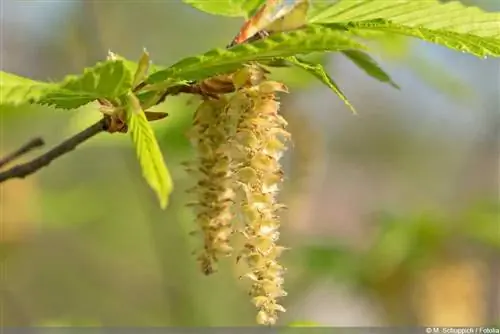
Plant the young tree between October and the end of March, but not during a period of frost. Make sure the desired location meets the requirements described and avoid working in soggy, wet ground. Dig a planting hole that should be about two to three times as wide as the tree's root ball. Treat the root ball carefully to keep it intact and not damage any roots. After planting, pour two watering cans onto the ground, muddy the planting site well and then add a good layer of mulch.
Tip:
At the same time, plant a planting stake that ensures sufficient stability in the first few years. After about two years, the tree should have enough roots that the post can now be removed.
Transplanting
From a trunk circumference of around 16 to 18 centimeters, hop beech trees are very reluctant to be transplanted. Most likely, the tree will then produce little foliage, and some branches and shoots may die. During the relocation process, cut the tree to be transplanted back by about a third and fertilize it with compost and horn shavings. It will then sprout more and produce many root shoots. Hop beeches are basically extremely vigorous trees that even grow from the stump.
Pouring
In the first few weeks after planting, the young trees should be watered often to stimulate new root formation. Even if it hasn't rained for more than a month during dry and/or hot weather, you should use a watering can or garden hose.
Wintering
Basically, the hop beech thrives best in a mild winter location, but is hardy down to a temperature of around minus 25 degrees Celsius. Only young trees and specimens cultivated in pots require winter protection; as a precaution, the latter should be wintered frost-free but cool. Late frosts in particular can cause frostbite.
Tip:
In spring, some branches and shoots may be frozen back by severe frost. Cut back the dead wood thoroughly before it sprouts and mulch the tree with ripe compost.
Diseases and pests
Holy beech trees are very sensitive to fungal diseases such as
- Root rot (Armillaria mellea)
- Stem rot (caused by Inonotus obliquus or Phellinus igniarius, among others)
- Leaf tan (Monostichella robergei)
- Bark necrosis (Fusarium wilt, Fusarium lateritium)
- Mildew (Phyllactinia guttata)
- Bark cancer (Cryphonectria parasitica).
Therefore, make sure to only carry out pruning measures on dry days. Many fungal pathogens find their way into the tree primarily through persistent rain and through cuts.
TheOak bark beetle (Scolytus intricatus) attacks not only oaks, but also hop beeches.
Tip:
The oak bark beetle, a weevil, primarily attacks weakened trees that are cultivated too dry. You can prevent an infestation by providing sufficient water.

